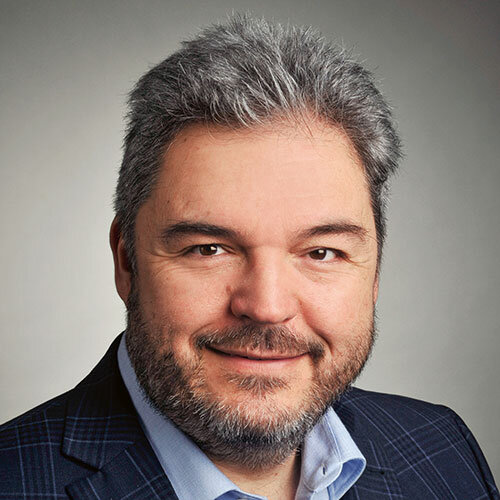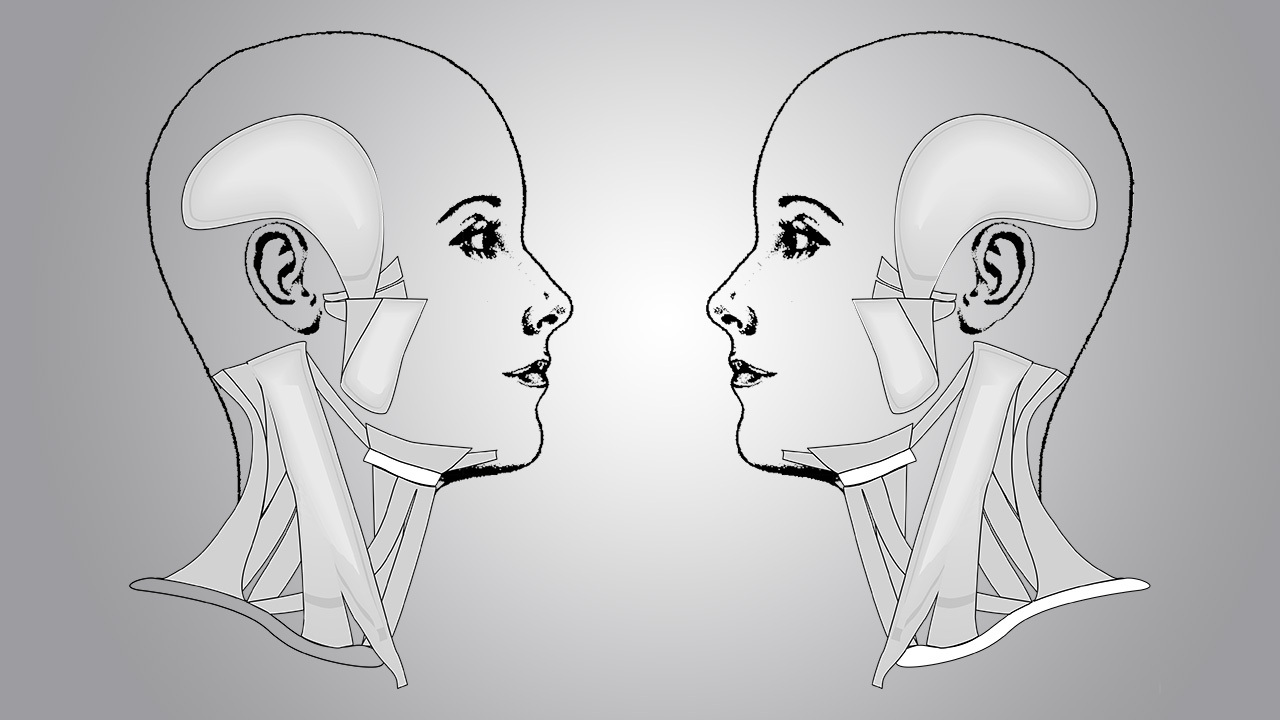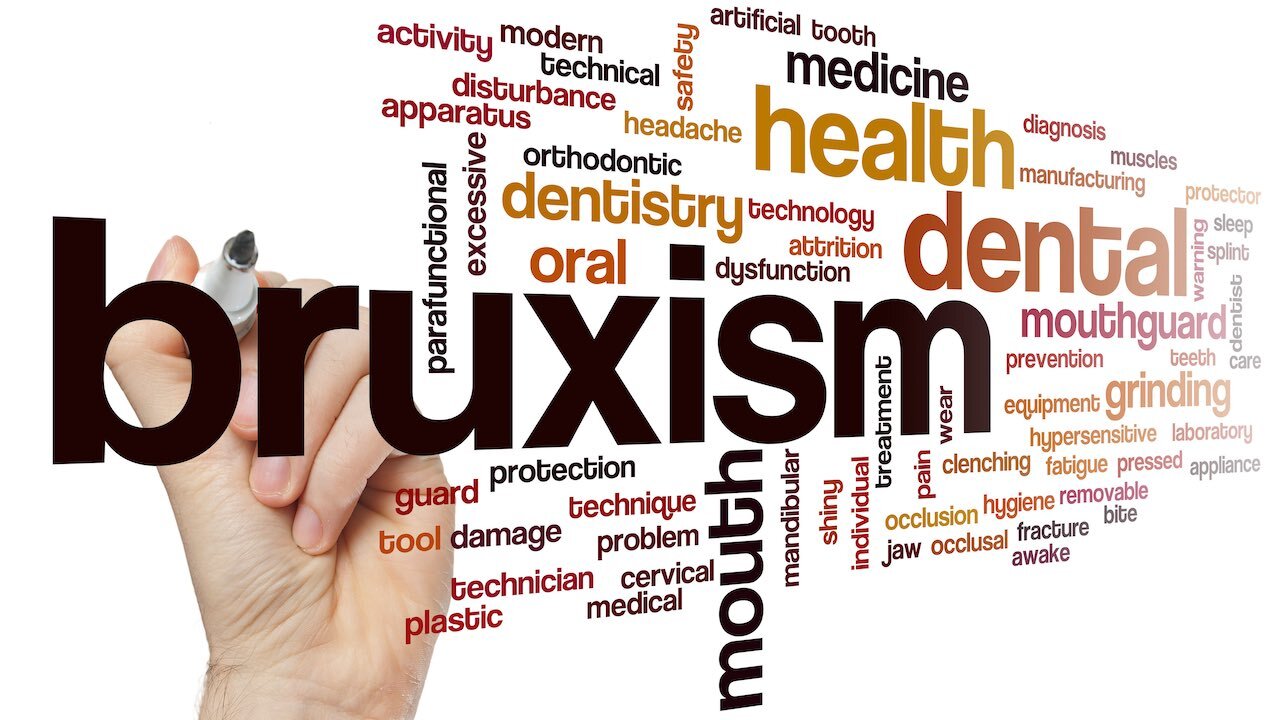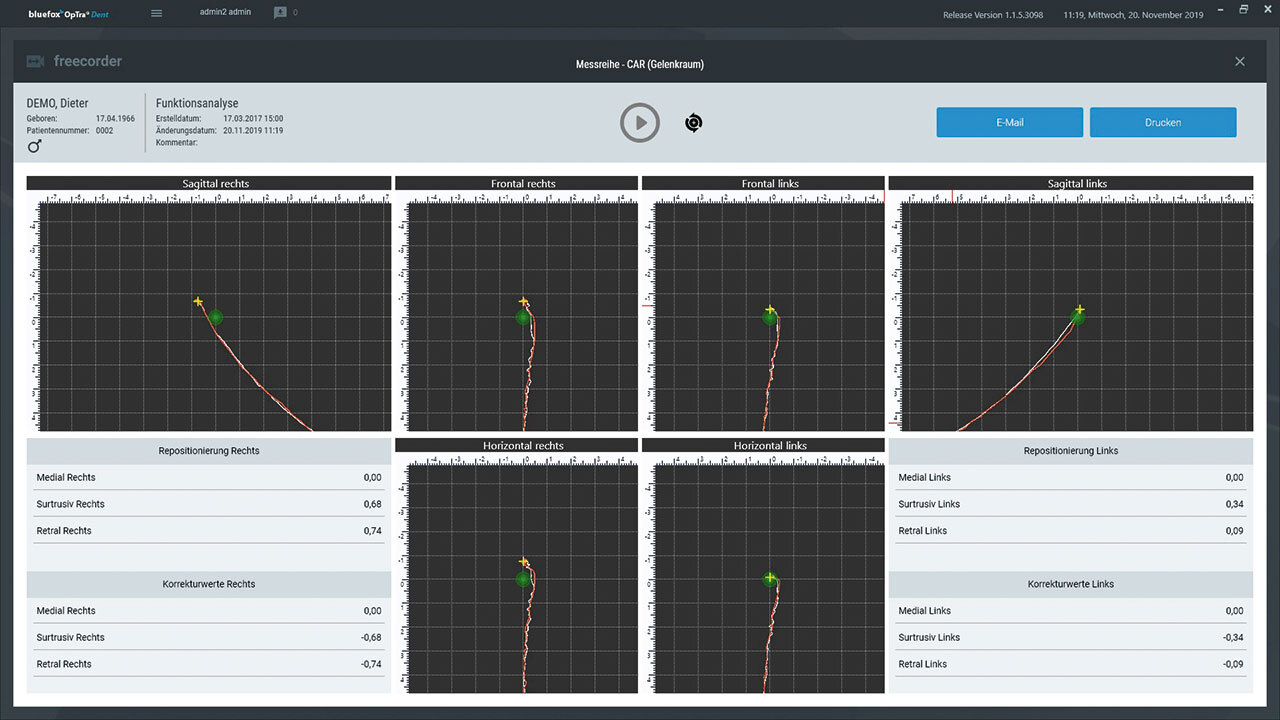Journal of Craniomandibular Function, 1/2022
Páginas 47-63, Idioma: Inglés, AlemánRaff, AlexanderBimaxillary splints are oral appliances with a number of established dental indications, and their names vary depending on the indication (eg, anti-snoring splint, sleep apnea appliance, and positioning splint versus simulation splint). These treatment appliances are an integral part of modern dentistry and are recognized in various guidelines and scientific publications. Nevertheless, they are not yet included in Germany’s official Dental Fee Schedule (GOZ), and several new resolutions on this subject have been passed in recent months. The aim of the present article is to present and discuss these guidelines and resolutions in the scope of a critical discourse.
Palabras clave: occlusal splints, bimaxillary positioning splints, mandibular protrusion splints, bimaxillary simulation splints, sleep apnea, snoring, arthropathy
Quintessenz Zahnmedizin, 9/2020
Zahnmedizin allgemeinPáginas 956-965, Idioma: AlemánEinwag, Johannes / Raff, AlexanderDer Beitrag beschreibt zunächst die Unterschiede zwischen Mundhygieneinstruktion, professioneller Zahnreinigung und unterstützender Parodontitistherapie bezüglich Inhalt, Nutzen und Indikation. Anschließend werden die Konsequenzen für die Delegation und die Berechnung entsprechender Leistungen in der Bundesrepublik Deutschland aufgezeigt.
Palabras clave: Mundhygieneinstruktion, professionelle Zahnreinigung, unterstützende Parodontitistherapie, Delegation, Abrechnung
Journal of Craniomandibular Function, 4/2020
Páginas 357-370, Idioma: Inglés, AlemánRaff, AlexanderClinical functional analysis (CFA) lays the groundwork for many diagnostic and therapeutic measures for craniomandibular dysfunction (CMD). Hence, Code 8000 of the German Dental Fee Schedule (GOZ) is central to billing for such functional analysis services. However, the principles for evidence-based practice of functional diagnostics have evolved substantially, which is rarely more evident than in GOZ Code 8000: 'Clinical functional analysis, including documentation.' The mismatch between the fee schedule specifications and current practice guidelines becomes particularly obvious when reading the procedural code description for CFA, which was taken from the former GOZ 1988 and adopted in the new and revised GOZ 2012, without updates or changes. Code 8000 states: “The service under no. 8000 also includes the following dental services: prophylactic, prosthetic, periodontal and occlusal examination, functional diagnosis of X-rays of the skull and cervical spine, and clinical reaction tests (such as a resiliency test and provocation test).” The German Dentistry Act requires dentists in Germany to practice dentistry according to current scientific evidence. However, it is difficult to reconcile best practice according to current scientific evidence with the outdated provisions of the GOZ. This article describes this problem in detail, based on the example of GOZ Code 8000. In the case of CFA, it is important to distinguish the exact scope of services included in GOZ Code 8000, since the field of dental functional diagnostics has undergone enormous scientific development and diversification in recent decades, yielding new and distinct services that must be billed separately.
Palabras clave: clinical functional analysis (CFA), craniomandibular dysfunction (CMD), temporomandibular disorders (TMD), fee schedule, German Dental Fee Schedule (GOZ)
Journal of Craniomandibular Function, 3/2020
Páginas 273-279, Idioma: Alemán, InglésRaff, AlexanderDie Weiterentwicklung der fachlichen Grundlagen der Funktionsdiagnostik betrifft mitunter auch die Neuverortung von bislang anders verorteten oder auch in anderen Kausalzusammenhängen systematisierten Entitäten dieses Fachbereichs.
Die Deutsche Gesellschaft für Funktionsdiagnostik und -therapie (DGFDT) hat daher gemeinsam mit der DGZMK und ca. drei Dutzend Fachgesellschaften 2019 die erste AWMF-Leitlinie "Diagnostik und Behandlung des Bruxismus" veröffentlicht – direkt in der höchsten Entwicklungsstufe S 3 (Registernummer 083-027 vom 02.05.2019). In dieser Leitlinie wird der Bruxismus als ggf. pathologisches eigenständiges Geschehen anerkannt und rückt damit gleichsam neben die craniomandibuläre Dysfunktion.
Zur Diagnostik des Bruxismus hat eine Arbeitsgruppe der DGFDT – parallel zur Entwicklung der Leitlinie – auf Grundlage der aktuellen Literatur den Bruxismus-Screening-Index (BSI) entwickelt. Eine solche fachliche Umschichtung muss auch Auswirkungen auf die Liquidation der Diagnostik des Bruxismus haben – welche, beschreibt der nachfolgende Beitrag.
Palabras clave: craniomandibuläre Dysfunktion (CMD), Bruxismus, Bruxismus-Screening-Index (BSI), klinische Funktionsanalyse, Gebührenordnung, GOZ, Analogberechnung
Journal of Craniomandibular Function, 1/2020
Páginas 53-64, Idioma: Alemán, InglésRaff, AlexanderAuch in der Funktionsdiagnostik und -therapie kommt es seit einigen Jahren zunehmend zu Auseinandersetzungen hinsichtlich der gebührenrechtlichen Einordnung verschiedener Untersuchungs- und Behandlungsverfahren. Dies liegt darin begründet, dass die von der Bundesregierung zuletzt 2012 überarbeitete Gebührenordnung für Zahnärzte (GOZ) generell gültig ist und Zahnärzte verpflichtet, ihre Leistungen ausnahmslos nach dieser zu berechnen (§1 GOZ), solange nicht durch das Gesetz etwas anderes bestimmt ist. Da die Funktionsdiagnostik und -therapie nach Vorgabe Sozialgesetzbuch V § 28 (2) 8 nicht zum Leistungsumfang der vertragszahnärztlichen Leistung zählt, betrifft dies alle Patienten mit funktionsdiagnostischem Behandlungsbedarf. Diese Regelung ist an und für sich eindeutig. Problematisch ist die Berechnung funktionsanalytischer und -therapeutischer Maßnahmen dennoch, weil die Gebührenordnung ein tabellarisches Gebührenverzeichnis enthält, das auch und gerade in diesem Bereich unvollständig ist. Diese Besonderheit ist rein formal bereits daran erkennbar, dass in der Gebührenordnung in §6 (1) eine Regelung enthalten ist, die ausdrücklich vorsieht, nicht im Gebührenverzeichnis enthaltene selbstständige Leistungen entsprechend bzw. analog anderer, im Gebührenverzeichnis der Gebührenordnung enthaltenen Leistungen zu berechnen ("Analogberechnung"). Der Verordnungsgeber vermeidet so eine allfällige periodische zeitnahe Aktualisierung der Gebührenordnung und ermöglicht durch die Analogberechnung dennoch die im Zahnheilkundegesetz geforderte Behandlung nach dem aktuellen Stand der Wissenschaft. Als Orientierung für Zahnärzte, welche nicht im Gebührenverzeichnis der GOZ enthaltene Leistungen selbstständig und daher auf dem Weg der Analogberechnung abrechnen, gibt die Bundeszahnärztekammer eine "Analogliste" heraus. Diese wird durch halbjährliche Überarbeitungen aktuell gehalten, enthält aber keine inhaltlichen Erläuterungen. Diese Aufgabe erfüllt ausführlich u. a. "Der Kommentar BEMA + GOZ"1 , ein seit Jahrzenten eingeführter unabhängiger Abrechnungskommentar, der auch bei Zahnärztekammern und Gerichten anerkannt ist. Dessen Mitherausgeber berichtet nachfolgend, inwieweit die Kondylenpositionsanalyse ein selbstständiges Verfahren darstellt und wie die Leistung zu berechnen ist.
Palabras clave: craniomandibuläre Dysfunktion (CMD), instrumentelle Funktionsanalyse, Kondylenpositionsanalyse, Gebührenordnung, GOZ, Gebührenverzeichnis, Analogberechnung
Journal of Craniomandibular Function, 4/2018
Páginas 367-378, Idioma: Alemán, InglésRaff, AlexanderSeit mehreren Dekaden rücken in der Zahnheilkunde progrediente Zahnhartsubstanzverluste, die nicht auf Karies und Traumata zurückgehen, zunehmend in den Fokus. Um diesen Zahnverschleiß zu erfassen, bedurfte es neuer klinischer diagnostischer Verfahren. Die erforderlichen Messungen des Zahnverschleißes und dessen Einordnung hinsichtlich seiner individuellen pathologischen Bedeutung sind mittlerweile in Form der zweistufigen Untersuchungsabfolge Zahnverschleiß-Screening und Zahnverschleiß-Status etabliert. Zur gleichen Zeit sind die im Gebührenverzeichnis der deutschen Gebührenordnung für Zahnärzte (GOZ) aufgeführten funktionsdiagnostischen Leistungen 2012 bei der GOZ-Reform im Vergleich mit der Vorgängerversion aus dem Jahr 1988 fast unverändert geblieben. Andererseits sind Zahnärzte in Deutschland nach dem Zahnheilkundegesetz dazu verpflichtet, die Zahnheilkunde nach aktuellem Stand der Wissenschaft auszuüben. Bei einer Beschränkung auf die Leistungen im Gebührenverzeichnis der Gebührenordnung wäre daher die Vorgabe des Zahnheilkundegesetzes nicht zu erfüllen. Der Gesetzgeber hat dafür in der neuen GOZ als Ausweg die Möglichkeit verankert, nicht in deren Gebührenverzeichnis enthaltene selbstständige Leistungen entsprechend nach Art, Kosten- und Zeitaufwand und Schwierigkeit vergleichbarer Leistungen abzurechnen ("Analogleistungen"). Der folgende Beitrag schildert am Beispiel der Erstellung des Zahnverschleiß-Screenings beziehungsweise des Zahnverschleiß-Status, die gebührenrechtlichen und fachlichen Hintergründe sowie die Konsequenzen für die Umsetzung in der Praxis.
Palabras clave: kraniomandibuläre Dysfunktion (CMD), Zahnverschleiß, Zahnverschleiß-Screening, Zahnverschleiß-Status, Gebührenordnung, GOZ, Analogberechnung
Journal of Craniomandibular Function, 3/2018
Páginas 249-257, Idioma: Inglés, AlemánRaff, AlexanderAs the evidence base for functional diagnostics expands with continuous research and development, this area of dentistry is becoming more and more integrated and interwoven with other medical fields such as psychosomatics and orthopedics. By now, many scientific studies exist in which tests have demonstrated associations between potential co-factors from these medical specialties and temporomandibular dysfunction (TMD). Even after the reform in 2012 of the German Dental Fee Schedule (GOZ), there is almost no change in the list of functional diagnostic services included in the new GOZ compared to the previous version of 1988. While the German Dentistry Act obligates dentists to practice dentistry in Germany according to the current state of scientific knowledge, it is impossible for dentists to do so if they are limited solely to the services included in the outdated contents of the official GOZ. However, German legislators deliberately drafted the new GOZ so as to include provisions for dentists to charge fees for separate services not included in its catalog of services, according to the type, cost, time requirement, and degree of difficulty of comparable services ('analogous billing procedure'). This article explains the legal framework and professional background for the implementation of this practice as well as the consequences thereof based on the example of tests to identify psychological co-factors that contribute to functional disorders of the temporomandibular system.
Palabras clave: temporomandibular disorder (TMD), tests for the identification of psychological co-factors, clinical functional analysis, German Dental Fee Schedule (GOZ), analogous billing procedure,
Journal of Craniomandibular Function, 1/2018
Páginas 61-71, Idioma: Inglés, AlemánRaff, AlexanderThe functional analysis of mandibular movement patterns based on electronic records (electronic axiography or condylography) is not covered by the 2012 revision of the German Dental Fee Schedule (GOZ). The only change from GOZ 1988 is that the old service item 806 was renumbered 8060 and limited to the application of mechanical recording systems. The description was otherwise left unchanged. A separate service item, 8065, was added with a similar description, but intended to cover the use of electronic registration systems. Apart from the distinction between mechanical and electronic recording systems, both services thus remain almost unchanged in the revised GOZ 2012 compared to the GOZ 1988. Furthermore, the descriptions of both service items unequivocally limit the scope of the items to the movement record intended for programming articulators. This is sufficient and useful for restorative applications. However, the methods for the functional evaluation of mandibular movement patterns that have arisen in recent years are not reflected in these two items. At the same time, however, these methods are well founded in the scientific literature and have now also been described in the Guideline (S2k) "Instrumental Functional Analysis in Dentistry"1. Dentists in Germany are required by law to practice dentistry according to the current state of the art, but they cannot do so based solely on the service items listed in the GOZ. § 6.1 of GOZ 2012 therefore explicitly stipulates that those dental services not listed as independent service items can be billed according to the type, cost, and time input involved and the degree of difficulty of comparable services (referred to as "analogous services"). With reference to the example of functional mandibular movement analysis, the present article describes the legal and technical background of the GOZ items as well as the consequences for their implementation in clinical practice.
Palabras clave: temporomandibular dysfunction (TMD), analysis of mandibular movements, recording of mandibular movement, clinical functional analysis, Dental Fee Schedule (GOZ), analogous billing
Journal of Craniomandibular Function, 3/2017
Páginas 237-244, Idioma: Inglés, AlemánRaff, AlexanderThe further development of the principles of functional diagnostics also concerns the inclusion and integration of the issues in this dentistry sector with those of other medical sectors such as orthopaedic or psychosomatic medicine. Some scientific studies are now available that underscore the significance of appropriate tests for identifying any existing co-factors from these sectors of medicine.
The list of service items contained in the German Dental Fee Schedule (GOZ) were hardly altered with regard to functional diagnostics by the GOZ fee reform in 2012, so that they differ very little from the previous version of 1988. Consequently, in this regard the GOZ is outdated, and since dentists in Germany are required by law to practice dentistry according to the current state of science, they cannot do so based solely on the service items listed in the GOZ. The legislator is aware of this problem and has, therefore, included the possibility in the new GOZ of invoicing those dental services not listed therein as independent service items according to the type of service, cost, and time input involved as well as the degree of difficulty of comparable services (referred to as "analogous services"). With reference to the example of tests for the determination of orthopaedic co-factors relating to a dysfunction of the stomatognathic system, this article describes the legal and functional background to the GOZ fees, and the consequences for their implementation in clinical practice.
Palabras clave: temporomandibular dysfunction (TMD), tests for determining orthopaedic co-factors, clinical functional analysis, Dental Fee Schedule (GOZ), analogous billing
Journal of Craniomandibular Function, 2/2017
Páginas 155-163, Idioma: Inglés, AlemánRaff, AlexanderThe further development of the principles of functional diagnostics frequently also has an effect on new diagnostic instrumental procedures. Diagnostic occlusal indicator splints for the visual analysis of occlusal parafunctions are an example of this. These were developed to record the intensity and distribution of tooth contacts over time throughout the period of splint wearing, and to enable their objective visual evaluation at a later date. The list of service items contained in the German Dental Fee Schedule (GOZ) were hardly altered with regard to functional diagnostics by the GOZ fee reform in 2012, so that they differ very little from the previous version of 1988. Consequently, in this regard the GOZ is outdated, and since dentists in Germany are required by law to practice dentistry according to the current state of science, they cannot do so based solely on the service items listed in the GOZ. The legislator is aware of this problem and has, therefore, included the possibility in the new GOZ of invoicing those dental independent services not listed in the fee code as analogous service items according to the type of service, cost, and time input involved, as well as the degree of difficulty of comparable services (referred to as "analogous services"). On the basis of the example of diagnostic occlusal indicator splints and their evaluation, this article describes the legal and functional background to the GOZ fees, and the consequences for their implementation in clinical practice.
Palabras clave: occlusal parafunctions, diagnostic occlusal indicator splints, dental fee schedule (GOZ), analogous services






